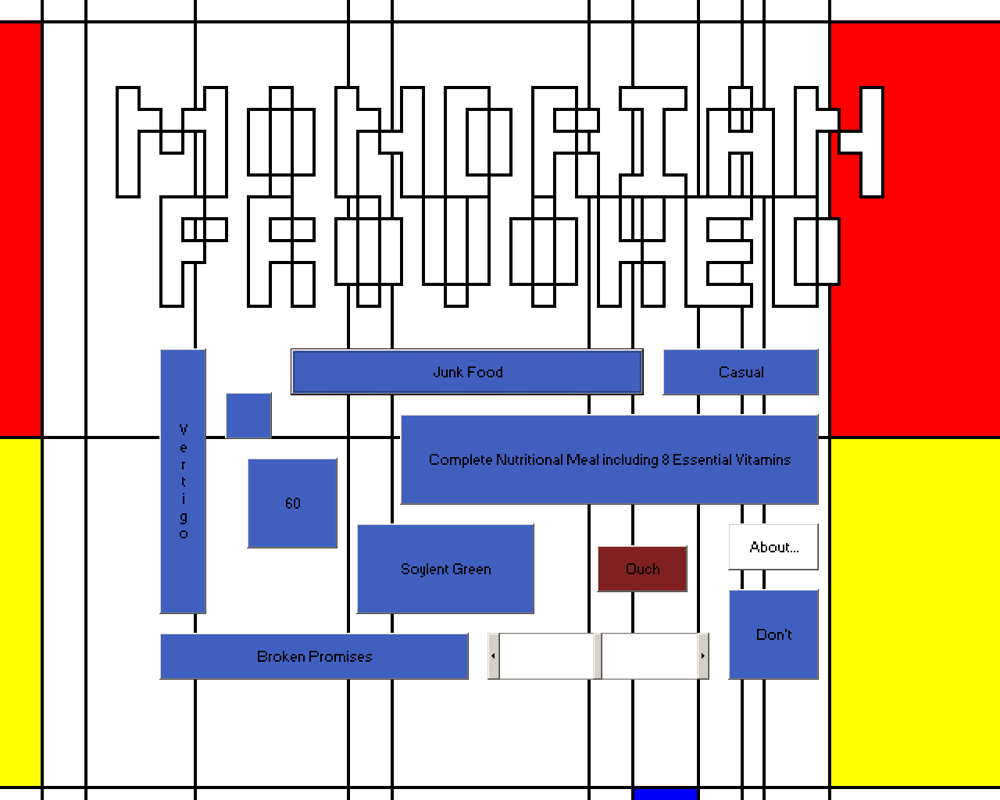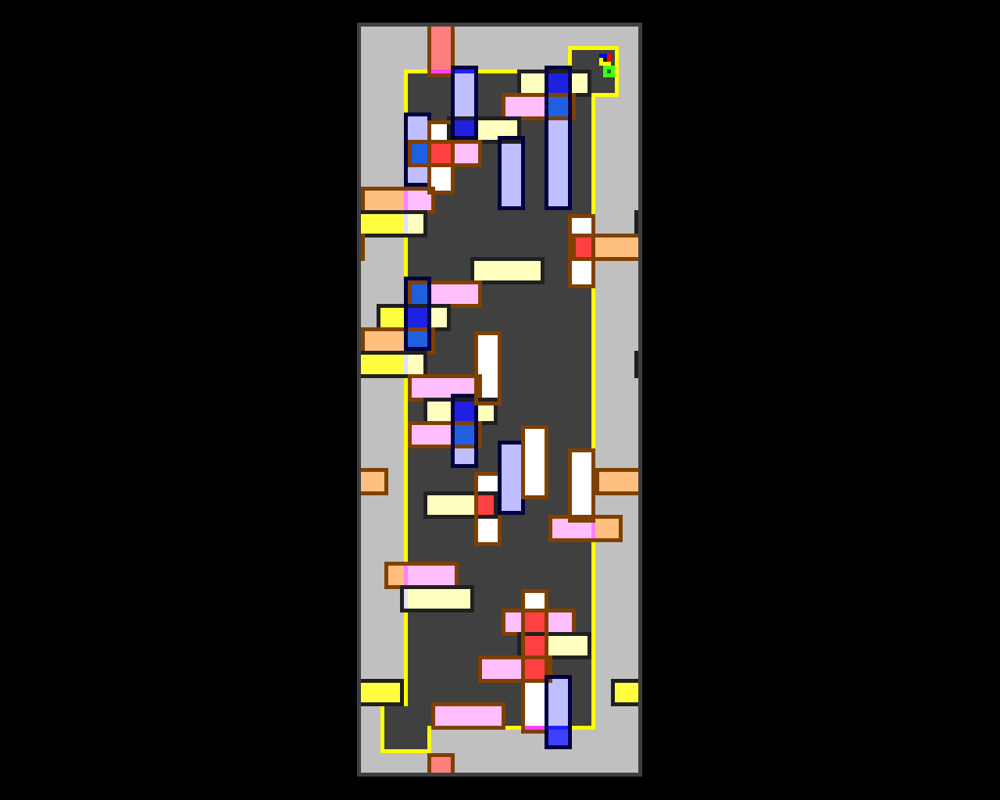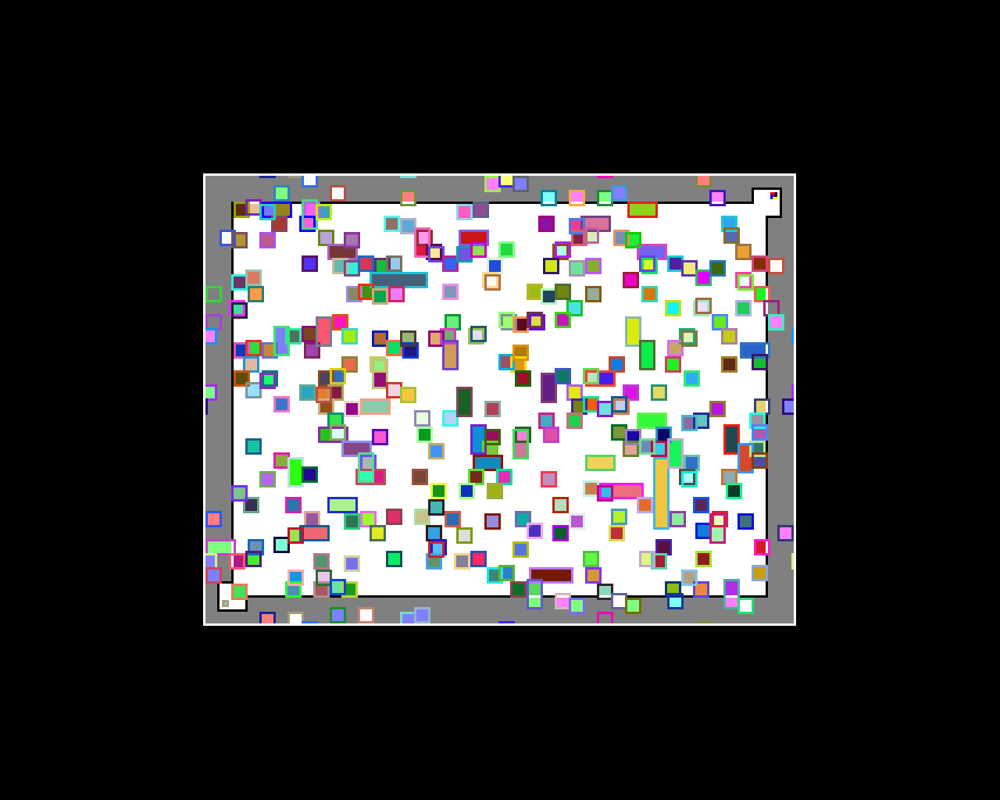Retro Replay Review
Gameplay
Mondrian Provoked challenges players with a unique dual-layered obstacle course, reminiscent of playing two perpendicular rounds of Frogger simultaneously. You steer a small, amorphous lump across a constantly shifting grid of colourful rectangles, each movement dictated by subtle mouse motions. The controls are intentionally crude, creating a tension between precision and chaos that shapes every play session.
(HEY YOU!! We hope you enjoy! We try not to run ads. So basically, this is a very expensive hobby running this site. Please consider joining us for updates, forums, and more. Network w/ us to make some cash or friends while retro gaming, and you can win some free retro games for posting. Okay, carry on 👍)
The core loop revolves around navigating your avatar through intersecting paths before it becomes trapped between moving rectangles or the perimeter of the playfield. When pinched, the lump explodes in an abstract-floral burst—an arresting visual motif that sends you back to the start. This “fail forward” design encourages players to learn spatial patterns and hone their timing in pursuit of longer runs and deeper satisfaction.
Difficulty ramps up as the speeds of rectangles and the density of the maze increase. This results in a precise dance of anticipation and reaction: do you dart forward to exploit an opening, or hold back to avoid being boxed in? The lack of rigid controls can be both frustrating and exhilarating, but it keeps the gameplay feeling alive and unpredictable.
Beyond simple navigation, the game sprinkles in subtle variations—temporary slowdowns, shifting rectangle sizes, and occasional safe zones that reward quick reflexes. These diversions ensure that every attempt feels fresh, inviting you to experiment with riskier paths and bolder strategies in pursuit of that perfect, uninterrupted traversal.
Graphics
Mondrian Provoked’s aesthetic is a bold homage to Piet Mondrian’s abstract compositions. The playfield features a grid of primary-coloured rectangles—red, blue, and yellow—outlined in stark black lines, set against a pristine white backdrop. This palette not only dazzles the eyes but also clearly distinguishes obstacles from safe lanes, reinforcing gameplay clarity.
Rectangles glide and collide with smooth animations, their edges glinting subtly when they intersect. When your lump meets its end, the explosion resembles a miniature cubist painting in motion: shards of colour splinter outward before fading. It’s a beautiful, almost poetic punishment that underscores the artistic inspiration behind the mechanics.
UI elements remain minimalist, with only essential information such as current run time and high-score markers discreetly placed at the edges. This restraint ensures the central maze retains its visual impact without distraction. Every frame feels deliberately composed, like observing a living Mondrian painting come to life.
Underneath its simplicity, the game runs fluidly even on modest hardware, with no noticeable frame drops as rectangle densities rise. The audio design mirrors the visuals with crisp, geometric sound cues: percussive clicks as shapes move, a resonant chime upon safe passage, and a satisfying crackle on explosion. Together, these elements reinforce the game’s cohesive abstract art theme.
Story
Unlike narrative-driven titles, Mondrian Provoked offers an abstract, interpretive experience rather than a traditional storyline. Your journey is metaphorical: you become the “provoked” entity striving to assert order and movement within an ever-shifting canvas of geometric forms. It’s a commentary on struggle and resilience expressed purely through gameplay.
Each run can be seen as a personal odyssey across an evolving work of art. Although there’s no spoken dialogue or cutscenes, the game’s environment tells a story of tension between freedom and constraint. The moving rectangles represent barriers—some deliberate, some accidental—that you must outwit through repeated trials.
Achievements and milestone markers serve as narrative breadcrumbs, charting your progress from chaotic novice to seasoned navigator. Unlocking variations in maze patterns and speed modifiers hints at deeper layers of challenge, almost like discovering hidden chapters within an abstract novel.
Ultimately, the “story” unfolds through your reactions and adaptations. Every explosion resets the narrative, allowing you to rewrite your approach. In this sense, Mondrian Provoked crafts a personal tale of perseverance without words, inviting players to project their own ambitions and frustrations onto its minimalist canvas.
Overall Experience
Mondrian Provoked stands out as a daring fusion of abstract art and arcade-style challenge. Its addictive “one more try” design, paired with the visual flair of Mondrian-inspired obstacles, makes each session feel both artistically rewarding and competitively engaging. For players seeking a cerebral test of reflexes and pattern recognition, this title delivers in spades.
The deliberately awkward controls may deter those who prefer precise input, but they’re crucial to the game’s identity. Learning to coax the lump through tight spaces without getting pinned is a gratifying endeavor, transforming early frustration into mastery over time. Patience and adaptability are key virtues here.
Visually and sonically, Mondrian Provoked achieves a rare synthesis of form and function. Its aesthetic choices bolster the gameplay rather than distract, making every explosion a moment of abstract beauty rather than mere failure. The minimalist UI and fluid performance round out a polished package that respects both art and play.
In sum, Mondrian Provoked is an evocative, challenging experience that merges the world of modern art with retro arcade sensibilities. It invites you to embrace its quirks, learn its rhythms, and appreciate every colourful explosion as a testament to your growing skill. For fans of abstract design and unforgiving puzzles, this game is a compelling addition to any collection.
 Retro Replay Retro Replay gaming reviews, news, emulation, geek stuff and more!
Retro Replay Retro Replay gaming reviews, news, emulation, geek stuff and more!








Reviews
There are no reviews yet.